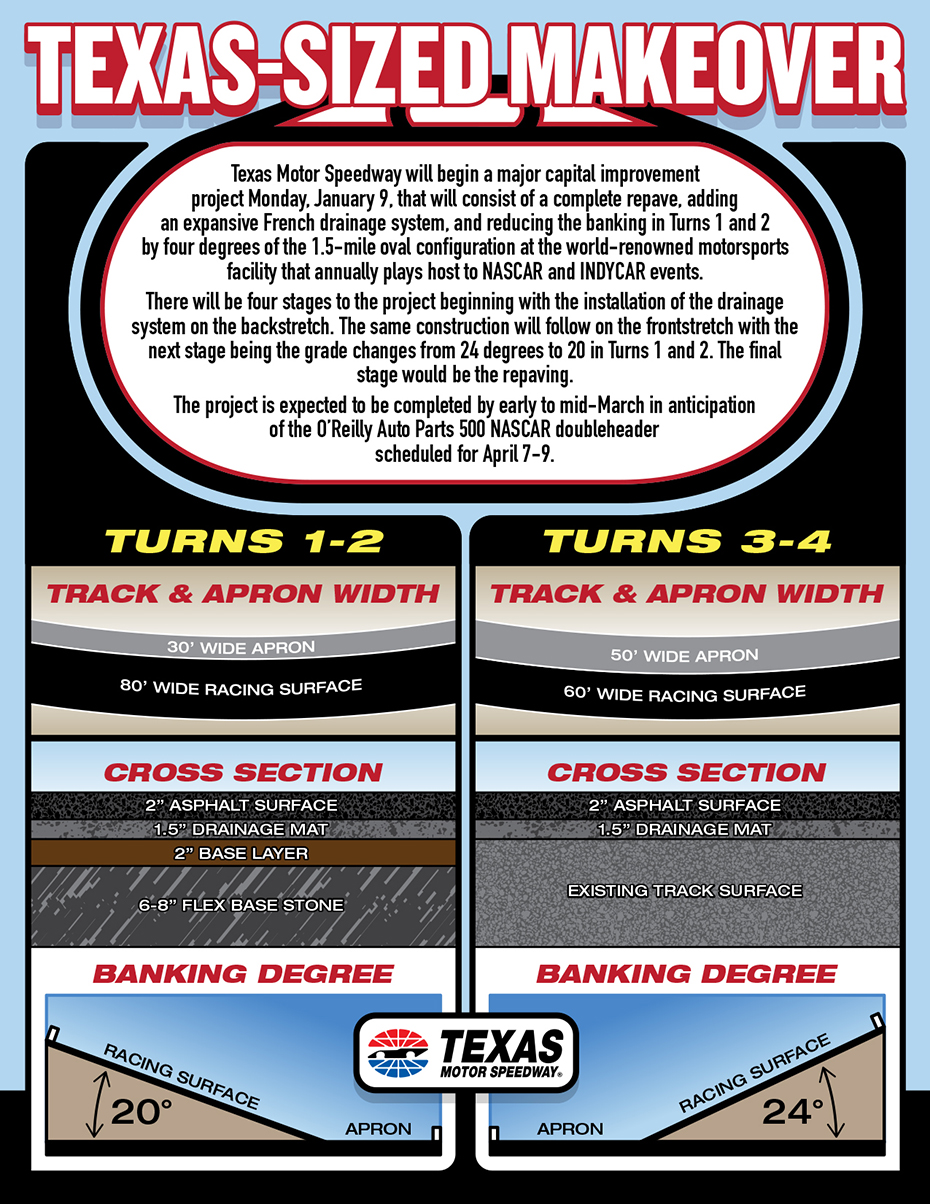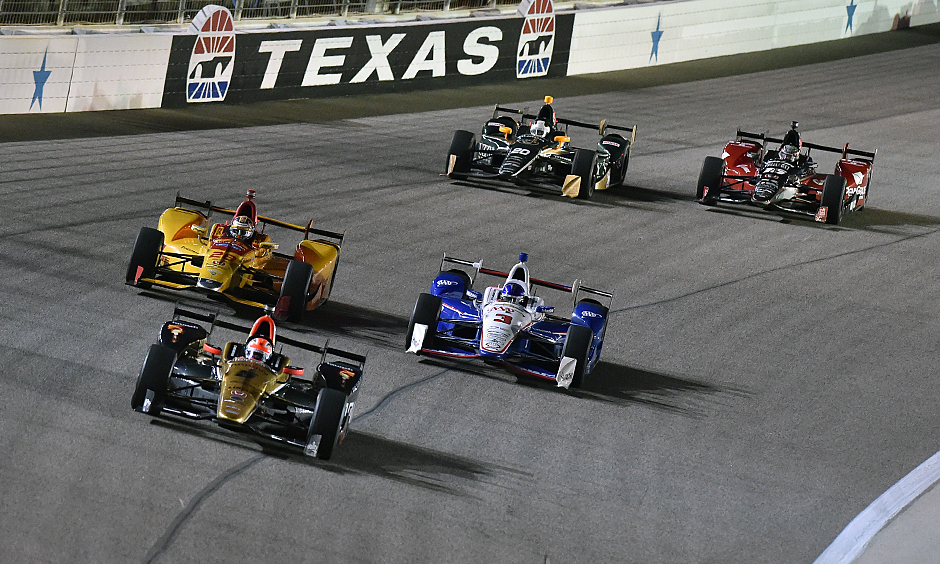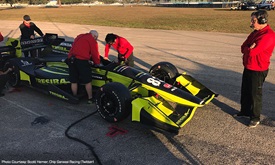Texas Motor Speedway undergoing big track changes for 2017
JAN 06, 2017
Texas Motor Speedway will undergo a complete repave, construction of an extensive drainage system and re-profiling of the 1.455-mile oval that has hosted Verizon IndyCar Series events since the track opened in 1997.
The renovation, beginning Monday, will add a new layer of asphalt over the existing pavement, an expansive French drainage system on the frontstretch and backstretch and a 4-degree reduction of banking in Turns 1 and 2. The project is expected to be completed in March. The Rainguard Water Sealers 600, the ninth of 17 races on the 2017 Verizon IndyCar Series calendar, is scheduled under the lights at TMS on Saturday, June 10.
The repaving and drainage system come as a result of issues the facility incurred in drying the racing surface, in particular this past year when the INDYCAR race and both NASCAR race weekends were affected by weather-related delays. The Firestone 600, originally scheduled for June 11 in 2016, was postponed until the following day by rain and wet track conditions and then halted by rain after 72 of its 248 laps. The race was completed Aug. 27, won by Graham Rahal in the closest finish in track history and fifth-closest in Indy car annals -- 0.0080 of a second over James Hinchcliffe.
"The fans are why we are doing this," track president Eddie Gossage said. "The old pavement no longer dried as quickly because, through the years of use and weather, the asphalt became porous, kind of like a sponge. Even if we only had a brief shower, it was taking us far too long to get the track dried in order to get on to the racing.
“We owe it to the fans to present the best possible racetrack so they will be assured of seeing NASCAR and INDYCAR races, even if we face some brief inclement weather. This will accomplish that goal."
The repave, conducted by experienced track paving company Lane Construction Corp., will feature an asphalt mix used in conjunction with the construction method to aid in the track's properties of an "aged" track. For installation of the French drainage system, trenches will be cut in numerous locations on the frontstretch and backstretch to provide multiple points for water to drain away from the facility more quickly and efficiently than the current system. A drainable mat installation that will tie into a continuous toe drain will aid in the drainage of the track as well.
The reconfiguration of Turns 1 and 2 will give the track a more unique layout from its current symmetrical 24-degree banking in all four turns. While Turns 3 and 4 will remain unchanged, the banking of Turns 1 and 2 will be decreased to 20 degrees with the racing surface width expanding from 60 feet to 80 feet in that section of the track.
"We looked at what would be the best way to create more exciting racing and to correct the water issues. We are excited to put these practices in place and create another great SMI race,” said Steve Swift, Speedway Motorsports, Inc. vice president of operations and development, who is coordinating the project.
The reduced banking will decrease lap speeds, potentially open additional passing opportunities in Turns 1 and 2 and provide TMS a new, distinctive layout that will be more challenging to the drivers.
"For years, I've heard the absurd comments about 1.5-mile tracks being tagged as 'cookie-cutter' tracks," Gossage said. "While nothing could be further from the truth – all 1.5-mile tracks are different – this assures once and for all that Texas Motor Speedway is unique, unlike any other track in the sport. That's the way we like it here in ‘No Limits, Texas.’"
This will be the second full repave since TMS opened 20 years ago. That project occurred in the summer of 2001 as the speedway’s surface was repaved with a granite-based asphalt compound from the original limestone-based asphalt.
Gossage and Swift explain the track changes in this video:





















